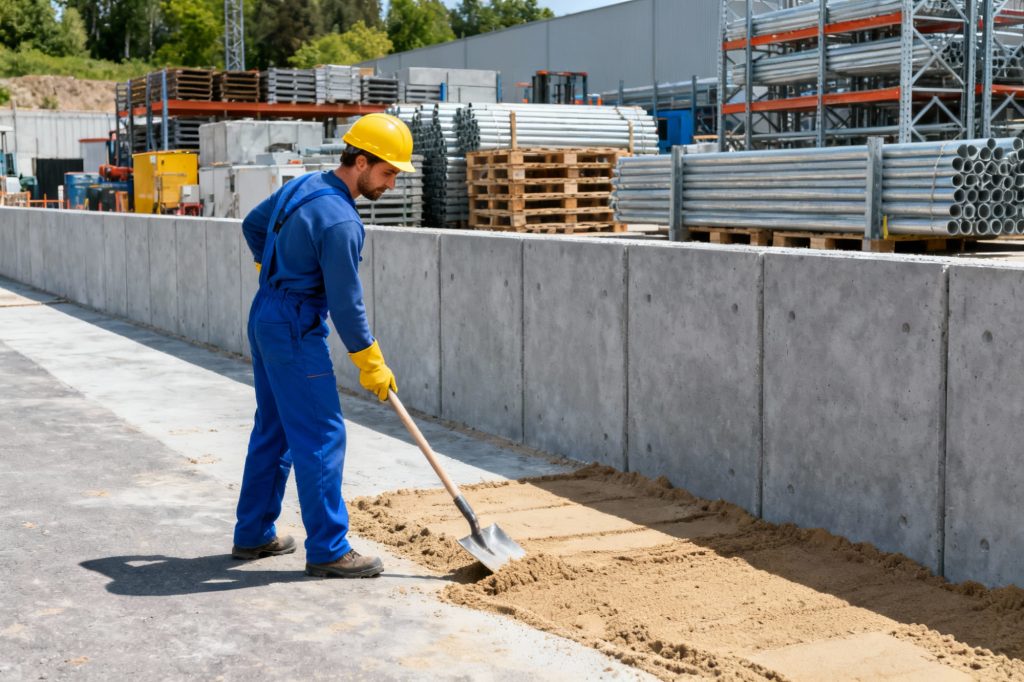Retaining walls are essential structural elements in modern infrastructure. They support soil, protect against erosion, and integrate with drainage systems to manage the flow of water. While cast-in-place concrete has been used for decades, the construction industry has increasingly shifted toward precast products for their consistency, efficiency, and long term performance. With precast concrete, municipalities and contractors in the United States gain high strength solutions manufactured in a controlled environment that meet strict quality control standards.
Structural Principles of Retaining Walls
A retaining wall must resist lateral earth pressure, surface water loads, and in some cases surcharge from traffic or adjacent structures. To maintain structural integrity, designers rely on reinforced concrete pipe (RCP) connections and drainage outlets that tie into the wall. The integration of pipe size and outlet pipe placement ensures water does not build behind the wall, reducing the risk of water damage or collapse.
By using precast concrete production methods, manufacturers provide structural elements with consistent reinforcement, thickness, and load-bearing strength. Stainless steel reinforcement or connectors may also be included for added durability in heavy duty environments. With these measures, precast retaining walls provide reliable service life even under challenging site conditions.
Advantages of Precast Concrete
Precast concrete retaining walls are produced in a controlled environment where the manufacturing process is standardized. This allows for precise curing, reinforcement placement, and dimensional accuracy. Unlike cast in place concrete, which is subject to weather delays and variable site conditions, precast concrete production guarantees high quality results with every unit.
These walls are also more cost effectiveness for a construction project. Since they are delivered as ready-to-install precast products, installation time is significantly reduced. Contractors avoid the extended forming, pouring, and curing required for cast-in-place methods, saving both labor and equipment costs.
PennDOT and NPCA Standards
For infrastructure projects across Pennsylvania, compliance with PennDOT specifications is critical. Precast concrete companies in Pennsylvania supply retaining wall units manufactured with PennDOT class A concrete, PennDOT concrete mix designs, and PennDOT concrete certification requirements in mind. These standards ensure strength, durability, and watertight performance.
In addition, products must often meet Bulletin 15 approved construction materials and PennDOT Bulletin 15 approved products guidelines. Contractors working with NPCA certified suppliers know that each precast unit is backed by third-party inspections. Plants holding NPCA certification status provide an added layer of assurance for public and private projects.
Integration with Drainage Systems
Retaining walls do not work in isolation. They are often paired with manholes precast concrete structures, catch basins, and storm drain box assemblies that move water away from soil loads. A well-designed wall incorporates pipe connections, outlet pipe features, and storm drain basin units to handle excess surface water.
For example, a precast wall installed along a parking lot may integrate with a concrete manhole and manhole cover to provide access for maintenance crews. Similarly, larger projects tied to a treatment plant or sewer manholes use retaining walls to manage both earth pressure and stormwater runoff in a safe, engineered system.
Service Life and Long Term Performance
The long term benefits of precast retaining walls are significant. With high strength mixes, consistent curing, and integrated design, these walls often outperform cast in place alternatives in service life. The durability provided by reinforcing concrete ensures they withstand decades of exposure to stormwater runoff, freeze-thaw cycles, and soil pressure.
Water management is another factor that extends service life. By directing the amount of water through outlet pipe systems and drainage solutions, precast products prevent saturation behind the wall. This reduces hydrostatic pressure and protects the structural integrity of both the wall and the surrounding soil.
Applications in the Construction Industry
Precast retaining walls are used in a variety of applications across the construction industry in the United States:
- Transportation projects: Highway embankments supported by precast walls combined with storm sewer manhole structures.
- Commercial sites: Parking lots requiring drainage systems connected to catch basins and outlet pipe features.
- Municipal systems: Projects requiring integration with storm manholes, sanitary sewer manhole structures, and manhole precast units.
- Industrial facilities: Heavy duty walls installed alongside precast concrete manholes and sewer systems for reliable flow of water management.
Each construction project benefits from the efficiency of precast products and the confidence of quality control testing.
Manufacturing Process and Quality Control
The manufacturing process for precast concrete retaining walls begins with precise mix design, reinforcement placement, and curing schedules. Plants maintain documentation to meet NPCA and PennDOT standards, ensuring consistency across every product. By producing in a controlled environment, defects are minimized, and dimensional tolerances are maintained.
Quality control testing includes compressive strength checks, inspection of reinforcing steel placement, and evaluation of durability under freeze-thaw cycles. With these measures, contractors can be certain each wall section meets project requirements for structural elements and service life.
Cost Effectiveness and Value
While initial costs may appear higher than some alternatives, precast retaining walls provide cost effectiveness through reduced installation time, fewer delays, and minimized maintenance. The ability to ship and install complete sections accelerates project schedules, reducing overall expenses for labor and equipment. Over the life of a structure, this efficiency translates to measurable savings.
Conclusion
Precast retaining walls deliver structural integrity, cost effectiveness, and long term durability. Manufactured in a controlled environment under strict PennDOT and NPCA standards, they provide high strength solutions that integrate seamlessly with drainage systems, manholes precast concrete structures, and outlet pipe features.
From highway embankments to commercial parking lots, precast products give the construction industry reliable options that reduce water damage, manage stormwater runoff, and extend service life. By combining reinforcing concrete, quality control, and proven manufacturing processes, precast retaining walls remain one of the most dependable solutions for modern infrastructure.

